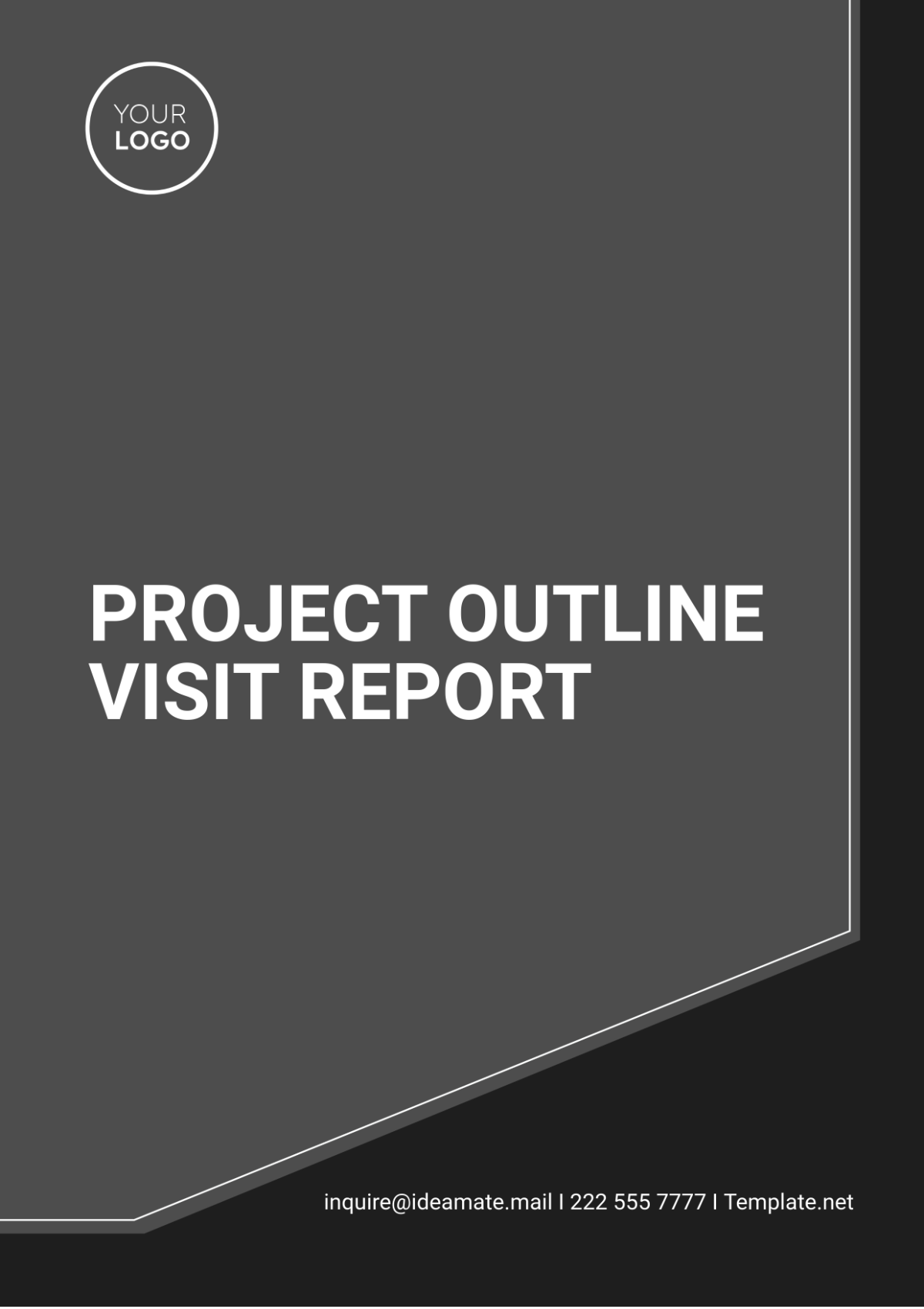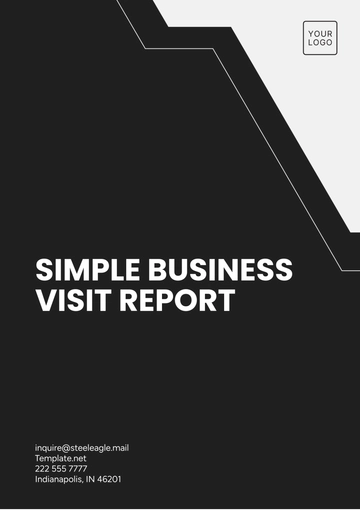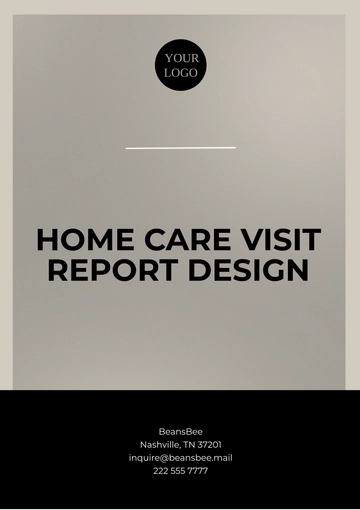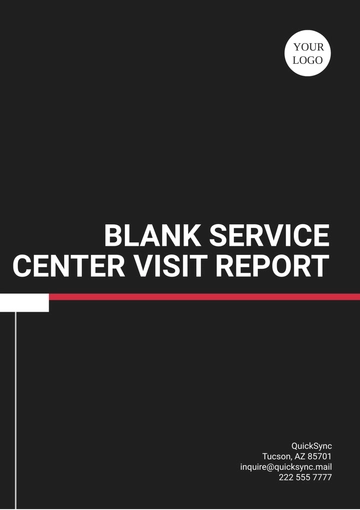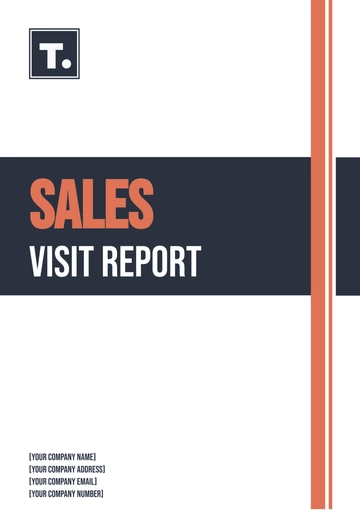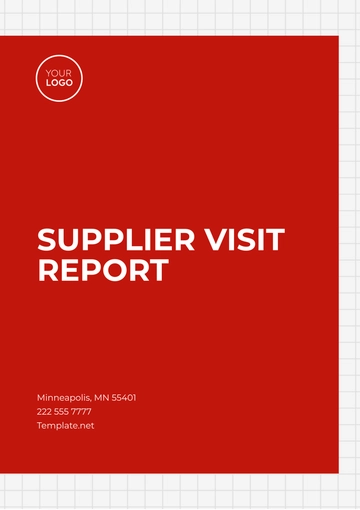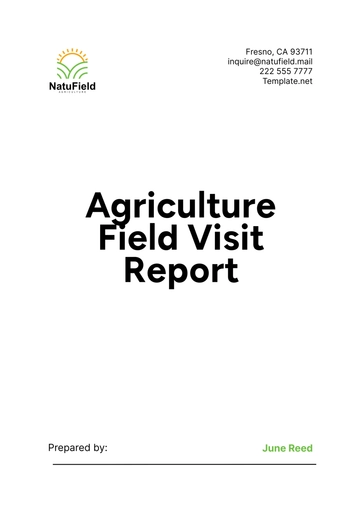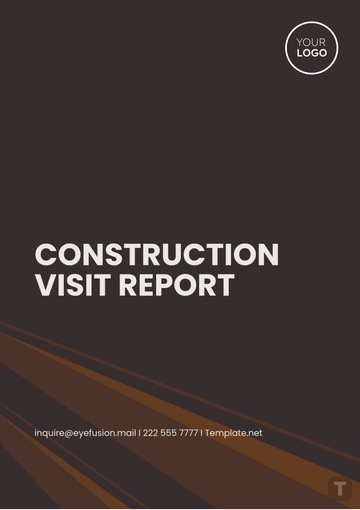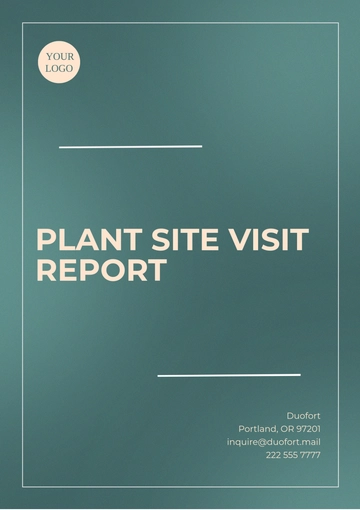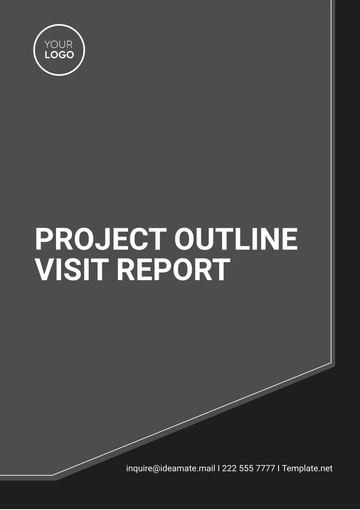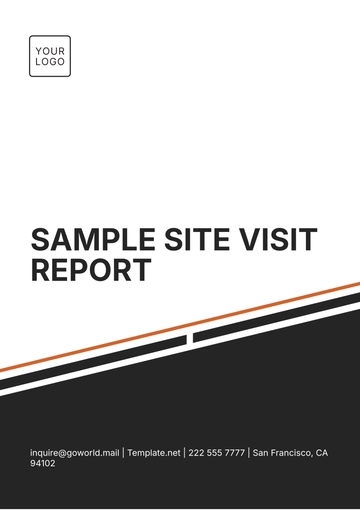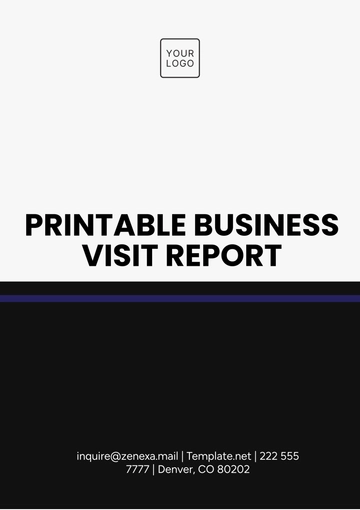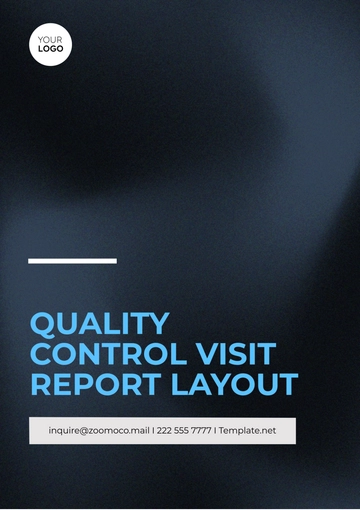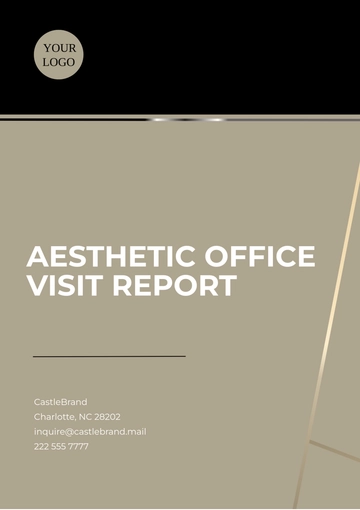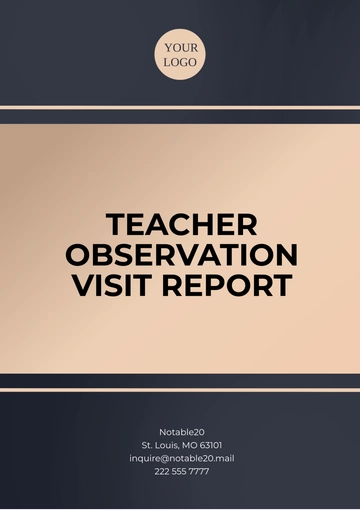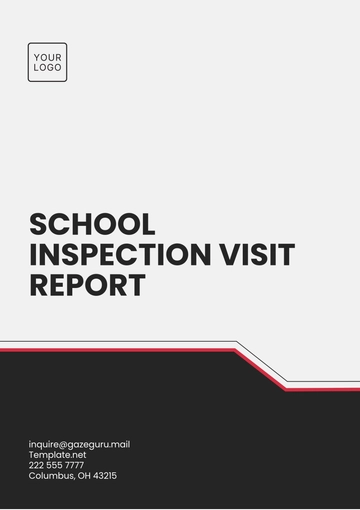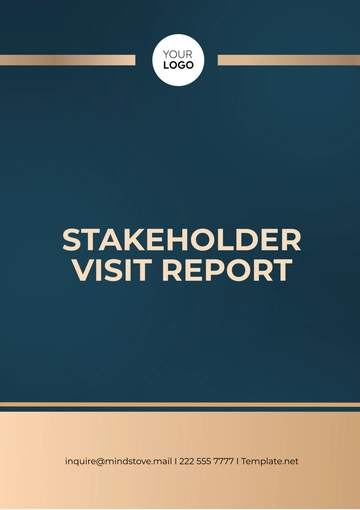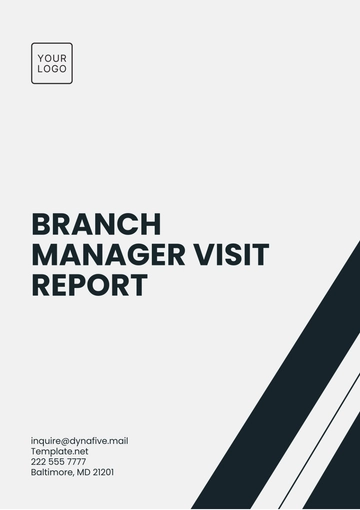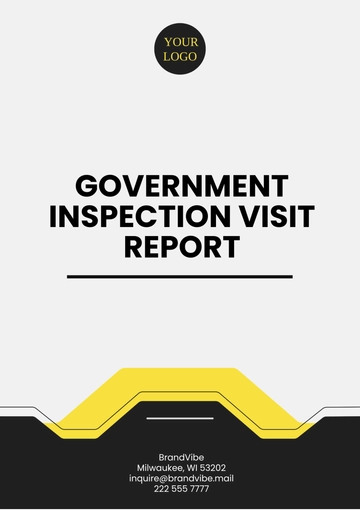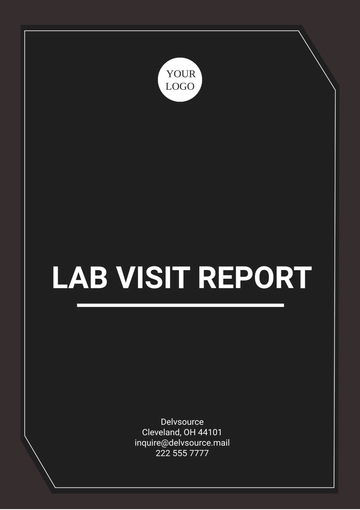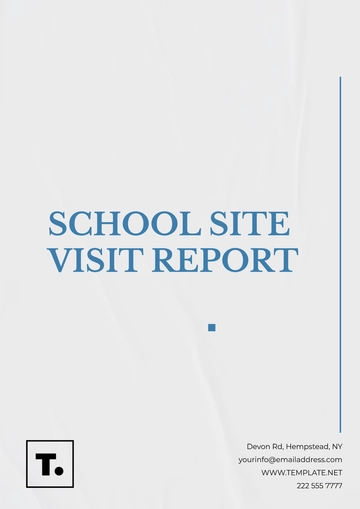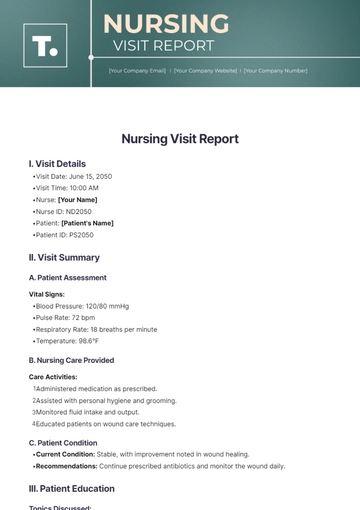Project Outline Visit Report
Prepared by: [Your Name], Project Manager
Date: March 25, 2050
I. Introduction
The Project Outline Visit Report for the Transformative Urban Development Initiative (TUDI) aims to summarize the key findings, observations, and recommendations made during the site visit conducted on March 24, 2050. This site visit was crucial to assess the project's current status, identify potential challenges, and outline the next steps toward achieving the ambitious goals set forth for the TUDI project.
II. Project Objectives
The TUDI project is designed to address the following key objectives:
Enhance Urban Infrastructure
Integrate advanced smart technologies, including smart grids and automated traffic systems, to improve urban mobility and energy efficiency.
Promote Sustainable Development
Implement eco-friendly construction practices, utilizing renewable materials and techniques that minimize environmental impact.
Improve Quality of Life for Residents
Provide enhanced public amenities, such as parks, community centers, and efficient public transportation systems, to foster a sense of community and well-being.
Foster Economic Growth
Create new business opportunities and jobs by encouraging investments in local enterprises and attracting technology firms to the area.
III. Current Status
Infrastructure Development
The construction of smart transportation systems and eco-friendly residential complexes is currently underway. The progress is on schedule as per the project timeline, with major milestones achieved in the past quarter.
Technology Integration
The implementation of advanced IoT (Internet of Things) devices for traffic management, waste management, and energy monitoring has started in key identified zones. However, there have been delays in the deployment due to supply chain disruptions related to international shipping constraints and semiconductor shortages.
Component | Status | Expected Completion |
|---|
Smart Transportation | In Progress | June 2050 |
IoT Devices Installation | Delayed | July 2050 |
Eco-friendly Complexes | In Progress | August 2050 |
IV. Key Findings
During the site visit, the following key findings were observed:
The construction teams are well-coordinated, adhering to the planned schedules and demonstrating strong collaboration across various trades.
Residents have shown positive responses toward the initiative, participating actively in community engagement sessions, and expressing eagerness for its completion.
Supply chain issues are causing delays in certain technological implementations, particularly with IoT devices and smart lighting systems.
Environmental impact assessments have been satisfactorily conducted, with all necessary mitigation measures being effectively implemented.
V. Challenges
The project faces several challenges that need to be addressed:
Supply Chain Disruptions:
Ongoing delays in the shipment of IoT devices and smart technology components are impacting the project timeline and may hinder the full operational capacity of the smart infrastructure.
Regulatory Approvals:
Some regulatory approvals for new constructions are still pending, which might delay the beginning of subsequent project phases, particularly in areas requiring extensive environmental review.
Funding Allocation:
There is a critical need for additional funding to cover the rising costs of materials and labor, exacerbated by inflation and changes in market conditions.
Stakeholder Communication:
Ensuring continuous and transparent communication with all stakeholders remains a critical task to maintain trust and collaboration, especially in light of the challenges faced.
VI. Recommendations
Based on the observations and findings from the site visit, the following recommendations are provided:
Expedite the Procurement Process:
Identify alternative suppliers for IoT devices and establish relationships with local manufacturers to reduce reliance on international shipments.
Engage with Regulatory Bodies:
Work closely with local and state regulatory bodies to fast-track pending approvals, including scheduling joint site inspections to address any concerns directly.
Secure Additional Funding:
Explore additional funding sources through government grants, public-private partnerships, and community investment initiatives to support ongoing project needs.
Enhance Stakeholder Communication Strategies:
Utilize real-time project management tools, such as collaborative platforms and mobile apps, to provide regular updates and foster engagement through virtual town hall meetings.
VII. Next Steps
The following next steps are proposed to ensure the project progresses as planned:
Review Procurement Strategy:
Conduct a comprehensive review of the current procurement processes, including identifying local suppliers and alternative logistics options to mitigate supply chain disruptions.
Stakeholder Engagement:
Schedule regular meetings with stakeholders, including residents and local businesses, to keep them informed and engaged throughout the project lifecycle.
Funding Plan:
Develop a detailed funding plan that includes a comprehensive budget review, outlining anticipated costs and identifying potential areas for cost savings.
Regulatory Liaison:
Assign a dedicated team to liaise with regulatory authorities to secure necessary approvals promptly, ensuring compliance with all local and federal guidelines.
VIII. Conclusion
The project team is dedicated to overcoming the challenges identified during the site visit and progressing toward the project's successful completion. Continued focus on proactive measures and stakeholder collaboration will be critical in achieving the project objectives by the projected timeline. The next site visit is scheduled for June 2050, where progress will be reviewed, and further strategic decisions will be made.
Visit Report Templates @ Template.net
